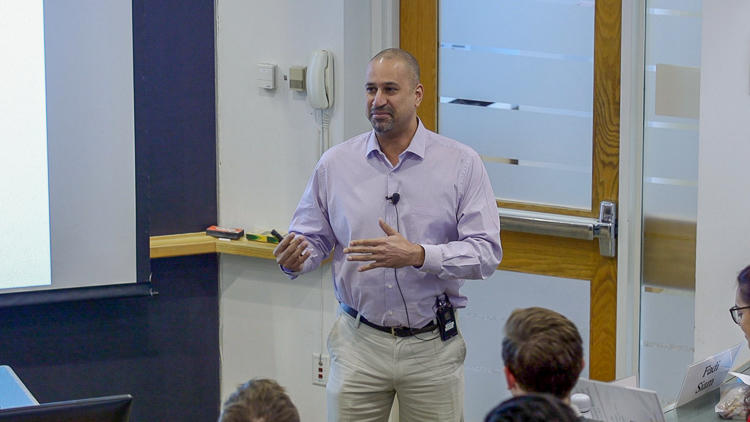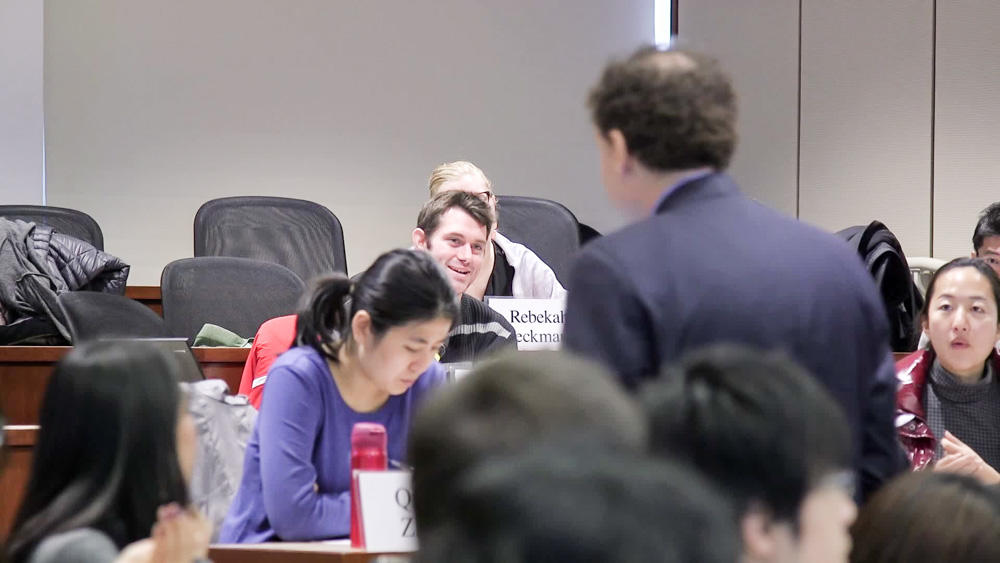Well-timed, appropriate humor can provide relief in tense classroom environments. Humor can be especially critical in active learning environments, where students’ immersion can heighten anxiety and stress. In this video, Mandell, his teaching assistants, and students discuss the central role that humor plays in whole group sessions following simulations. After the intensity of the learning activity and the constructive criticism of “hot” debriefs, humor becomes a helpful tool to keep students engaged and allow them to reflect on mistakes with some levity.
Incorporating humor to ease tensions in active learning
Instructor
Brian Mandell, Mohamed Kamal Senior Lecturer in Negotiation and Public Policy
Student Group
Graduate
School
Harvard Kennedy School
Course
Advanced Workshop in Multiparty Negotiation and Conflict Resolution
Group Size
60 students
- Use humor appropriately. It is always safer to crack jokes about situations and yourself rather than about individual students.
- Incorporate comedic relief into classes at strategic junctures. Especially after high-octane learning exercises, humor can lighten the mood and keep students from shutting down.
- Consider rehearsing jokes and thinking up humorous anecdotes prior to lessons, as using humor spontaneously is always risky.
- Garner argues that humor can be associated with content retention in undergraduates (2006).
- Humor has been linked to reduced anxiety in the classroom (Lomax & Moosavi, 2002).
- A Faculty Focus blog post describes how the right kind and amount of humor can help build a classroom environment that is conducive to learning.
- In "The Use of Humor As a Teaching Tool in the College Classroom," Ronald Deiter describes common myths, practical tips, and specific examples about using humor in the college classroom.




